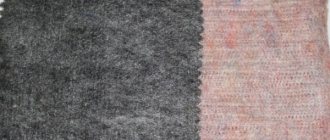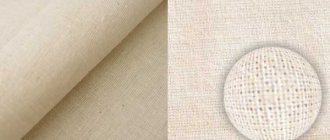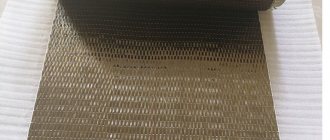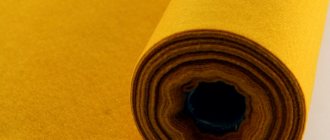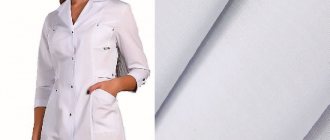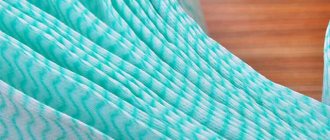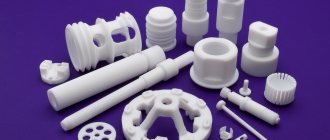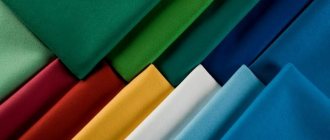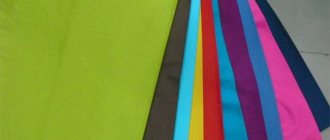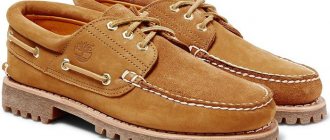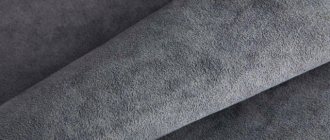Genuine leather suede is an expensive material that not everyone can afford. Modern technologies have made it possible to develop a method for producing artificial suede, which in appearance is practically no different from products made from natural raw materials. Ecosuede pleased not only ordinary mass consumers, but also animal activists. The need for natural leather used for the production of bags, gloves, upholstery materials, shoes, and belts has significantly decreased. A synthetic analogue has appeared on the goods market, pleasing with its quality and appearance.
What is ecosuede?
Ecosuede is practically no different in appearance from products made from natural raw materials.
Curious consumers gain confidence in materials when they understand what it is and what it is made of. There are different methods for producing eco-suede.
Woven varieties
Higher quality and more expensive material is made by weaving special microfiber threads. Woven fabrics are processed on brush machines, which split the thread-like surface layer in a strictly specified mode. As a result, ecosuede is formed with fibers of a certain height, evenly distributed over the entire surface.
Sometimes, to improve the quality of the fabric during weaving, additional looped threads are made, from which pile is then obtained.
Conditionally non-woven type of ecosuede
In other technologies, a pile layer of synthetic threads is glued onto a woven base. Often such eco-suede is called non-woven, although this definition is conditional. The base of the material is made of woven fabrics. The fibers are obtained by gluing a layer imitating suede onto the surface. The pile covering is fixed using conventional polyvinyl acetate adhesives or hot lamination.
Regardless of the method for obtaining a rough surface, the material is treated with Teflon to increase the ability to reject water and dust particles.
- Woven ecosuede is used for sewing jackets, raincoats, and gloves.
- Material with a glued pile layer is used mainly for upholstery.
The difference between suede and other materials
Suede products are valued for their sophisticated appearance, as well as durability, strength and hypoallergenicity. However, the range of textile products includes many analogues of suede, which differ from natural fabric in both positive and negative properties.
How to fake suede
Sometimes unscrupulous sellers, wanting to earn more, pass off artificial material as natural. To avoid falling for the tricks of such sellers, when purchasing products, pay attention to the parameters indicated in the table.
| Properties | Natural suede | Fake |
| Appearance | It will never be perfectly smooth or evenly colored. | The paint lies evenly and there are no flaws on the surface. |
| Pile | If you run your hand over the surface, the pile will change texture and color. Its surface will be very soft and velvety. | The pile always remains the same and feels a little rough. |
| Wrong side | Soft and pleasant, reminiscent of velvet paper to the touch. | Has a fabric base. |
| Exposure to moisture | Absorbs water. | Repels moisture. |
| Tactile sensations | It gets warmer after a short touch with your hand. | Remains cold after contact with skin. |
| Tag | Quality products always have a sample of the material. | There is no sample tag. |
| Smell | Smells like genuine leather. | It either emits a synthetic smell or no smell at all. |
| edge | The section shows a homogeneous structure. The edge is processed using a special method without bending. | If you carefully examine the edge, you will notice a thin layer of fabric. The cut can be folded. |
| Creases | Quickly returns to its original form if the material is bent. | There may be creases on the surface. |
The difference between natural suede and artificial or eco-suede
You can find 2 types of eco-suede on sale:
- a less strong and durable material created by gluing fibers to a dense base;
- a more wear-resistant fabric made using looped synthetic threads.
Unlike their natural counterpart, artificial fabrics have the following advantages:
- a humane manufacturing method, since no animals suffer during the production of the fabric;
- more budget option;
- the paint applies to the material correctly and evenly;
- Thanks to synthetic impregnations, products are more durable and last longer.
Despite these advantages, eco-suede, like natural fabric, requires careful care and does not tolerate moisture. In addition, the material does not “breathe” well, retains heat or cold, and can cause skin reactions. In addition, cheap versions of artificial suede have a specific synthetic smell, and their surface wears off quickly.
How is it different from genuine leather?
As you know, natural suede and leather are similar materials, as they are made from animal skins. Suede is very different from leather in appearance and production method. Leather products, like suede ones, require careful care, are flexible and durable, do not cause allergies and are highly breathable. However, smooth leather is able to repel moisture, which is not inherent in natural suede.
How to distinguish from velor, flock and nubuck
Unlike natural suede, velor, flock and nubuck are rougher and tougher materials.
Velor can deteriorate even with a single exposure to moisture or detergent. The pile is long and easily changes direction. Fingerprints are always visible on the surface of the velor. There are always creases in the material, and the pile actively attracts dust, wool and threads.
Nubuck is a less durable material. In appearance it is smoother than suede. Nubuck wears out quickly, loses its shape and color. After a short period of use, creases and cracks appear on the surface.
Flock is considered a durable material, and its properties resemble velvet. Unlike suede, its fabrics have a shorter pile, obtained by spraying small particles of wool or cotton. The material absolutely cannot withstand exposure to moisture, becomes highly electrified and wrinkles.
How is suede different from split leather?
Despite the fact that split leather, like suede, is of a natural nature and is made from animal skins, it also has characteristic differences. If suede is made from the top layer of hide, then split leather is made from melon or hide layer. Split wood has a perfectly smooth, velvety surface, as it is processed with a knife and special compounds. Unlike suede, the material does not restore its shape well, lasts much less time and does not withstand exposure to moisture at all.
Properties and advantages
Ecosuede has gained popularity due to its practicality, aesthetic qualities, and affordable prices. In appearance, it is often completely indistinguishable from natural products. Moreover, the material has a soft, non-blinding iridescence, which additionally creates comfort. When used, many other advantages appear:
- The material, thanks to its soft, velvety surface, creates a pleasant tactile sensation.
- The ability to create a feeling of warmth in cool seasons and a feeling of cooling in hot weather is amazing. This quality is provided by microscopic air cavities located between evenly spaced villi.
- Ecosuede does not change its appearance for a very long time, does not stretch, or deform. It does not form bald patches, which, unfortunately, often appear over time on genuine leather suede.
- The material does not absorb moisture and has the ability to repel dirt particles.
- Ecosuede has a uniform and durable color that does not change with long-term use.
- Artificial suede is resistant to mechanical stress, does not tear, does not form kinks, and always looks well ironed.
- A characteristic feature is the ability to change the direction of the villi when stroking. By swiping your hand you can create special effects on the surface.
Properties of natural suede
Due to its natural origin, suede is considered a hypoallergenic and wear-resistant material. High-quality suede products last a long time, do not accumulate static electricity, allow air to pass through well and do not fade over time. The material is resistant to deformation and moisture.
What does the fabric look like?
Externally, the material looks elegant and noble. The soft and uniform velvety surface is pleasant to the touch. The fabric can be thin, which means it fits well and fits in beautiful neat folds, or thick, which means it can be denser and more shaped.
Does suede stretch or not?
Compared to genuine leather, suede is a more pliable and soft fabric. Thanks to its elastic properties, suede shoes break in well and fit perfectly on the foot. However, if the selected suede shoes or boots are short in length, tight, or do not fit well, it is not recommended to buy such products. If you experience only slight discomfort after buying new shoes, you can get rid of it at home using a special shoe stretcher.
Features of use, sewing
Synthetic eco-suede made from microfiber fibers can be used for sewing bags.
Ecosuede is a diverse group of materials that can be used for sewing dresses, suits, outerwear, shoes and accessories. It is important to know the composition of the fabric and its manufacturing technology in order to decide on the direction of use:
- Eco-suede with fibers glued to knitwear looks great in dresses, skirts, and blouses. It drapes easily, forms beautiful folds and flounces.
- Fabric with lint on a thick cotton canvas holds its shape well and can be used for sewing suits, jackets, and cardigans.
- Synthetic eco-suede made from microfiber fibers has a high density and thickness. It can be used for upholstering furniture, making shoes, bags, sewing jackets and raincoats.
What is suede
Suede is a material produced by tanning the skins of small animals. Suede has no face, soft, thin and velvety on both sides. Due to the unique characteristics of strength and at the same time elasticity, suede is used to make clothes, shoes and other products.
An interesting fact is that initially suede was thick, as it was created from the skins of cattle, and only over time it began to be made from the skins of small livestock.
Product care
The material does not get dirty for a long time. However, the time will come when it will have to be cleaned. The choice of care method depends on the type of eco-suede and the type of product:
- Dry professional cleaning is best for clothing. Despite the fact that some users share their impressions of methods for safe washing, in our opinion, this should not be done.
- Upholstery fabric can be easily cleaned with a regular brush. You can apply foam from special detergents to a sponge and clean the furniture surfaces with it. There is no need to be particularly zealous. Ecosuede cleans easily and quickly. There is no need to get carried away with water treatment. The material does not absorb water, but reflections on the surface may remain.
The correct choice of material and method of caring for it will allow you to enjoy eco-suede products for a long time.
Weak side of ecosuede
Ecosuede has an attractive appearance and a lot of other advantages, but here we can highlight some disadvantages:
- insufficient heat exchange. Natural fabric can “breathe”, but clothes or shoes made of artificial fabric can be very hot in the summer;
- the material does not tolerate high humidity;
- need for special care. It is better to wash such items by hand, using neutral detergents. However, this also applies to products made from natural linen.
Manufacturing technologies are constantly being improved, so ecosuede definitely deserves attention, despite some shortcomings.
Care instructions
In order for a suede product to last a long time, it needs to be properly cared for. Whatever properties suede has, it should be remembered that it is fabric. She tends to get dirty. This especially applies to light shades. Eco-materials are easy to care for, but they should not be exposed to aggressive agents.
Suede upholstery will be much more difficult to clean.
If we are talking about curtains, curtains, then they can be washed. This procedure must be performed manually. Machine washing involves mechanical stress that the material may not withstand. The ideal mode would be hand washing, without twisting. Products after washing must be placed on hangers. Proper and careful care will extend the life of the suede product.
Harsh household products are not suitable for cleaning a suede sofa.
It is necessary to avoid the appearance of greasy stains on the surfaces of such fabrics. They eat into the product and are impossible to remove. For this reason, sofas, chairs, and other products made of artificial suede are not installed in the kitchen. If a greasy formation does appear on the fabric, then the only option is to remove this section of the coating and replace it with a new piece of material.
Manufacturers recommend dry cleaning only for suede products. Various designs, items of clothing, shoes, furniture that contain inserts, or are entirely made of artificial suede, are accompanied by instructions. You can ask the seller for care recommendations.
Since it is difficult to independently determine the method of making the material, it is necessary to take advice from manufacturers. They know the type with which the product is made, which means the instructions for caring for the fabric will be correct. With proper care, the fabric will remain in its original form long after purchase.
Rules of care
When caring for a sofa upholstered in faux suede, follow these guidelines.
- The most useful tip is to buy a removable cover. It will protect the fabric from abrasion, mechanical damage and other external factors. The cover can be removed, washed, and changed if necessary.
- As soon as liquid gets on the suede, you need to immediately shake off the drops and wipe with a damp cloth. If there is a stain, you can clean it with soda (leave it for a day and then vacuum it) or wipe it with a sponge and soapy water, but do not scrub vigorously. As soon as the material has dried, the pile should be restored with a soft brush.
- Vacuuming a sofa upholstered in faux suede is allowed every week, but it is better to use a soft nozzle.
- To clean the material, it is better to use dry cleaning services. The most preferable option is dry cleaning with hydrocarbon solvents or “dry wedge”. These methods will not damage the fabric, but will only give it a renewed look.
- Care must be taken to ensure that food stains do not dry on the fabric.
- To care for the product, special products and stain removers for natural and artificial suede are suitable. However, before using a similar composition to remove stains, test the product. To do this, you can try applying the stain remover to the underside of the upholstery and observe the reaction.
- If the sofa is covered with a removable cover made of synthetic suede reinforced with Teflon, then it can be washed. But under no circumstances should you twist the product after washing; you must use a centrifuge.
- When washing, do not use bleaches, solvents, chemicals, or petroleum products.
How to easily and quickly distinguish natural suede from artificial one?
When looking for suitable suede items, it is important to understand the criteria by which natural and artificial fabrics differ. Experts recommend paying attention to cost, fabric structure, pile and smell.
Price. For obvious reasons, natural products will not be very cheap. This especially applies to exclusive items from famous brands.
Fabric structure. Natural suede usually has certain flaws: small scratches, uneven surface and color. Such defects, although not clearly expressed, can be easily noticed upon careful inspection.
Pile direction . If the color of the product changes after you run your hand over it, this may mean that the suede is of natural origin.
Even the highest quality substitute may smell slightly of paint or other chemicals, but real suede has the characteristic aroma of a leather product.
You can do the test using a drop of clean water. Natural fabric will quickly absorb liquid due to its porous structure. The synthetic analogue will keep it on the surface for several seconds, thanks to its water-repellent properties.
Ecosuede can easily be called a new generation material. The fabric has an attractive appearance, is pleasant to the touch and is superior to the expensive original in many respects.
Did you like it?
Loading…
Found a mistake? Select it and press Ctrl + Enter. We'll fix everything!
How to care for faux suede?
Like any other material, this one also has a margin of safety. Although it is durable, it is not worth treating it as immortal. Careful care and storage , as with natural suede, will prolong its life.
Cleaning eco-suede, in general, is not too different from cleaning natural suede. Vinegar or ammonia can be used in the same way. They are applied to cotton wool in pure form or diluted in half with water and gently blotted. These liquids will cope with both grease stains and ink stains.
Soap scum from shampoo , washing gel, dishwashing detergent or regular soap is a good option. Using a dry sponge, apply it to the surface of the product and remove dirt and stains.
There is also a difference - this material does not tolerate solvents that are harmful to synthetics (including those based on petroleum products), as well as chlorine-based bleaches. Only products intended for delicate washing. You can read about them here.
A short video about the advantages of eco-suede. Especially useful for those who sew)
So, we see that Eco-suede is not “scary” at all , and although the prefix “eco” is now even applied to thermonuclear reactors, this wonderful material rightfully deserves it. And there are two reasons for this - not a single animal is killed and a person feels absolutely comfortable in it. As they say, the sheep are safe and the wolves are fed.) If at least one person, after reading this article, reconsiders their policy of purchasing suede products in favor of high-quality artificial ones, then I will consider my mission accomplished).
And you?
Properties of suede fabrics
Any suede fabric has characteristic properties:
- durable;
- wear-resistant;
- poorly permeable to moisture;
- practically does not wrinkle;
- absorbs little dust and dirt;
- soft to the touch;
- does not fade during operation;
- does not stretch.
The fibers easily turn in the other direction if you run your palm over the fabric.
